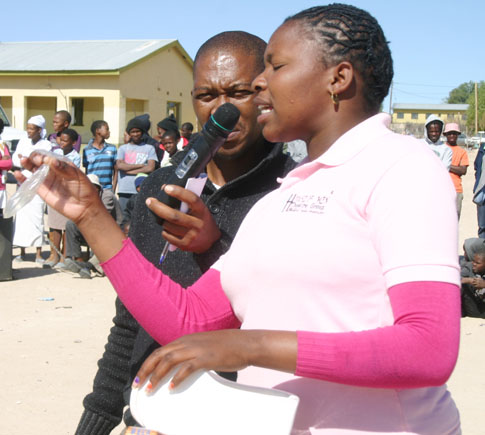Femidom Myths and facts unbundled
19 Aug 2013
Owing to the hype that was associated with its advent in the local market nearly eight years ago, it appears like the female condom often christened the Femidom, has vanished without trace.
Its common knowledge now that countless negative perceptions and myth regarding the use of the Femidom has resulted to its accessibility and use unpopular among women.
BOPA took to the streets and spoke to some women on their experiences with the Femidom. Although many reserved to be quoted some were brave enough to share their stories. “E santse e le teng ka nte ebile? I haven’t tried using it because it looks so big and scary,” quipped Gaborone West resident, Ms Gontse Seloi.
A final year student at Limkokwing University who spoke anonymously said some of the challenges she encountered was that women were not open to make decisions about sex in their relationships. “I seriously wanted to continue using it but my partner discouraged me,” added the young lady.
By a random assessment many young women were reluctant to use it because society has conditioned them to think negatively about it. Word has it that it also makes an annoying noise during contact. And by today’s standards women are fancied with smart and portable items which do not give the supersized contraceptive access to their hand bags.
In an interview with Coordinator for Behavior Change, Interventions and Communication in the Ministry of Health, it was revealed that government is embarking on a rigorous campaign to educate and promote the use of both the male and female condom through the National Condom Strategy (NCS) 2012-2016.
The objective of the strategy is to increase demand for condoms while addressing barriers to correct and consistent condom use in all sexually active populations in order to prevent HIV/ Sexually Transmitted infections and unplanned pregnancies.
It is also geared towards timely access to reliable condoms through programmes that address the current coverage gap amongst others.
Ms Elizabeth Koko explained that prior to the launch of the Femidom in 2005 a lot of people had embraced it in their acceptability study. “I think what went wrong was the sporadic promotion and campaign of the Femidom. We engaged in mass media campaigns and held interpersonal communication but were not as effective as we planned,” she added.
In 2007 the Ministry developed an HIV and Aids prevention strategy among which was the NCS. “When we introduce a strategy we do groundwork. Of course the Femidom was a success story internationally and regional as is the case with South Africa as we speak,” said Ms Koko.
According to the needs assessment, the male condom uptake stood at 70 percent while that of the Femidom was agonizingly low due to a number of factors.
However with the introduction of the FC2, the Female Condom of the Second Generation is likely to give much more enhanced features and probably compete with the male condom. Ends
Source : BOPA
Author : Baleseng Batlotleng
Location : GABORONE
Event : Interview
Date : 19 Aug 2013






